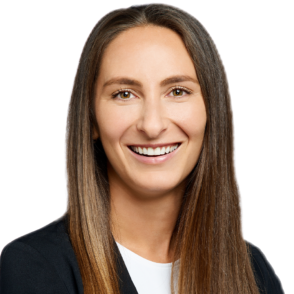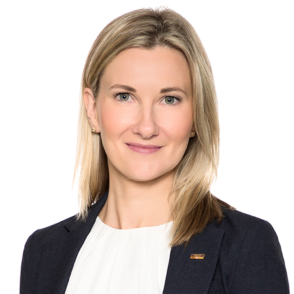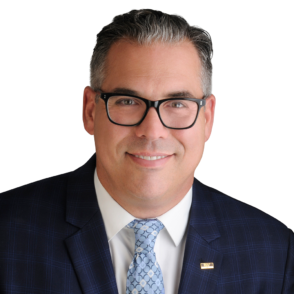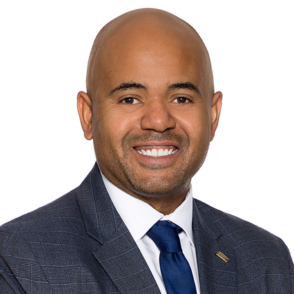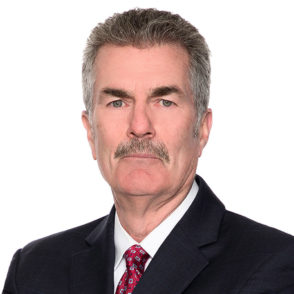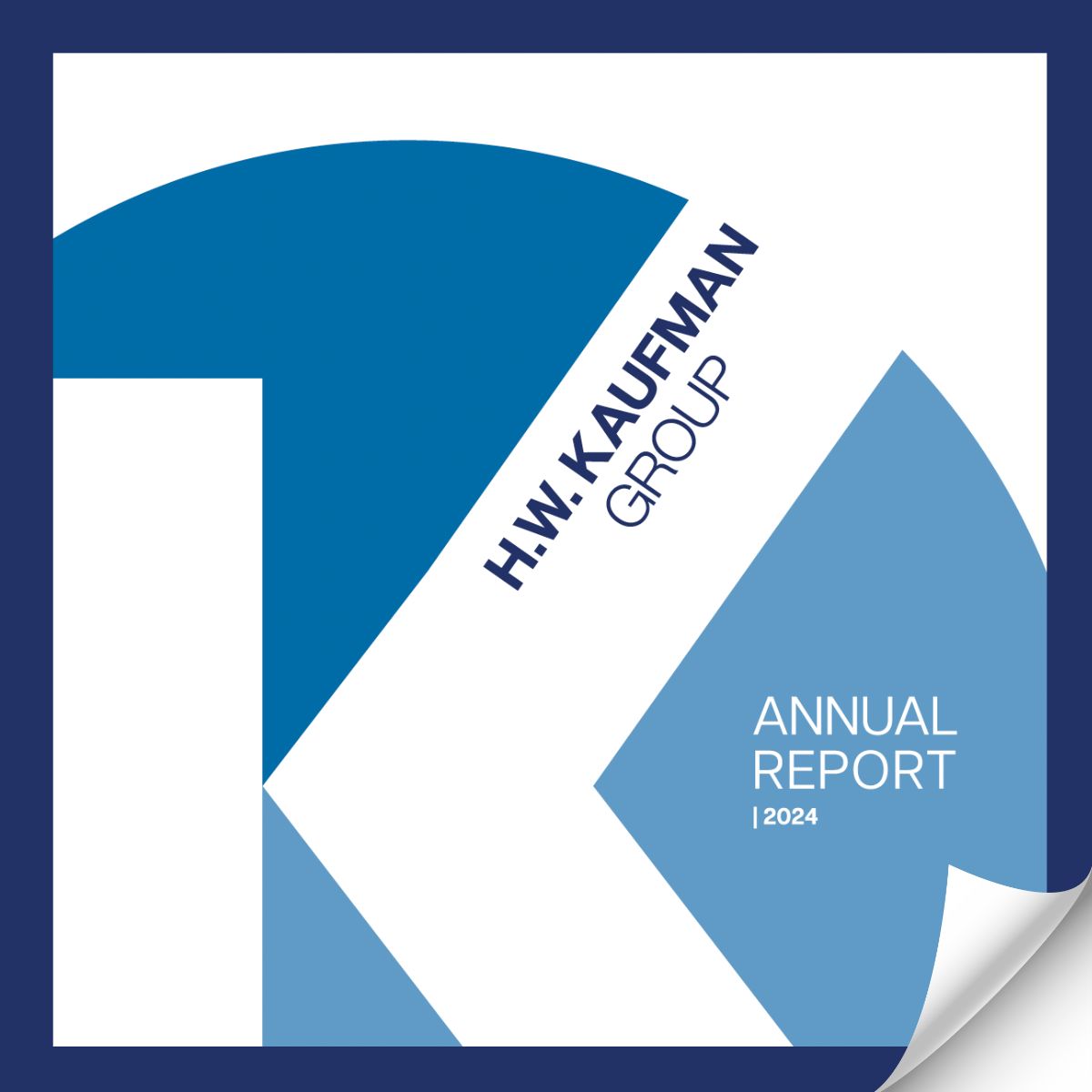The title of this quarter’s overview and forecast could easily be: “Profitability Matters.” That is especially true in the Property space for both Personal and Commercial policies. The industry faces daily challenges from CAT storms and events, making every state subject to immediate loss from hurricanes, wildfires, and convective storms—defined as severe local storms associated with wind, thunder, lightning, heavy rain, tornadic activity, and more. The increase in wildfire activity in states west of and including Colorado is expected to continue.
A June article in Business Insurance Magazine indicated that inflation and catastrophic losses within the industry “are raising concerns about insurer reserve adequacy” and that such cost pressures “could extend or exacerbate current hard market conditions in non-life insurance,” according to a Swiss Re Ltd. report. Given the impact of carrier profitability, several trends are emerging in the Property & Casualty (P&C) space.
- Deductibles: Carriers require higher deductibles for specific perils. Wildfire is considered one of the most predictable CAT events because of mitigation efforts, building requirements and more, while wind/and flooding are less predictable. As a result, these storms carry higher deductibles. Carriers are setting limits, but clients may have a significant deductible to incur before insurer coverage applies. Deductibles are also increasing in line with exposure through the application of percentages of insured value rather than flat dollar amounts.
- Fraud: According to the FTC, consumers lost $8.8 billion to fraud in 2022, representing a 30 percent year-over-year increase. Concerns of fraud are likely to persist in 2023 for insurance institutions that have historically seen fraud in the 10 percent range of P&C losses.
- Litigation Funding: Litigation funding is a fast-growing challenge for the insurance industry. The practice was featured by the CBS News program 60 Minutes in December 2022. It refers to when a third party such as a private equity firm invests in a lawsuit on behalf of a plaintiff in exchange for a share of the profit. The plaintiffs are not loaned the money and are not obligated to pay anything back to their funders unless they win the case. Funders get a large percentage of the award if the plaintiff is successful. Detractors of the practice say there is little to no regulatory oversight of the funders. Combined with nuclear verdicts, the practice of litigation funding is increasing the risks for carriers in a variety of P&C areas as third-party, deep-pocketed companies are targeted through the legal system. Litigation funding is an example of a well-coordinated Plaintiff’s Bar that is an Achilles Heel for Liability.
- Technology: Carrier profitability is necessary to not only pay claims and other expenses but more recently to to fund additional investments in technology, with subjective data driving more informed rate and capacity decisions. Science is a strong source for efficient underwriting decisions based on everything from historical storm patterns to increased predication within actuarial science. One example of utilization is that of wind gates, which refers to scientific modeling that identifies very specific high-impact areas of the country impacted more frequently by damaging and/or catastrophic windstorms.
RATE
As mentioned above, profitability continues to factor in renewal and new rate decisions as the P&C sector continues to play catch-up from losses in recent years. As such, rates are generally unchanged from the Q1/Q2 report. Double-digit increases are common for some clients based on loss history and specific risk characteristics. In general, rate reductions are highly unlikely in the foreseeable future although a short-term tamping of rates is still occurring within some lines of business such as Workers’ Compensation and Directors & Officers (D&O).
Perhaps the biggest culprit for rate increases outside of the need for carrier profitability is nuclear verdicts and CAT storms. The expectation is that these issues will continue to keep rates high, especially as litigation funding, plaintiff sympathy and litigious pressures remain.
CAPACITY
Capacity is being tightly managed by carriers as they look to spread risk across North American markets. Carriers are selectively pulling back on both the capacity they are willing to put forward and the lines of business they are willing to underwrite. Competition for capacity is intense, increasing the importance of fully completed and detailed submissions with narrative.
On the CAT side, carriers can save capacity for clients who invest in mitigation technology and strategies. According to a February 2023 McKinsey & Company Global Insurance Report, mitigation and prevention solutions can help clients become more resilient to these natural catastrophic risks. The report indicated that “leading commercial carriers have been working with governments and regulators to ensure that building codes are fit for purpose and adequately address local catastrophe risks.”
TERMS & CONDITIONS (T&C)
Carriers remain vigilant with wording for Terms and Conditions (T&C) given current market trends and margin challenges. Many policies contain more restrictive terms than in past years. That tightening will continue, so brokers and agents should work closely with clients to ensure they understand the limitations and restrictions from one set of terms and conditions to another.
Parametric coverage provides an alternative, non-insurance option of risk transfer that can offset restrictive T&C language. These policies establish pre-defined parameters and indemnities for measurements such as floodwater depth, size of hail from a hailstorm and more. The parameters are scientifically measured with the client triggering coverage if the predefined threshold is met (i.e., two or more feet of storm surge/flooding). Given increasingly restrictive T&C across the board, brokers and agents should be aware of parametric insurance and other alternative options for their clients which Burns & Wilcox is prepared to assist with.
Contributor: Paul G. Smith, Corporate Senior Vice President, H.W. Kaufman Group
Q3 2023 FORECAST BY LOB
Below, our experts provide further guidance, delving deeper into specific areas with advice and outlook.
PERSONAL INSURANCE (US)
The potential for significant property loss from a catastrophic storm can happen anywhere in the continental U.S. The East and West Coasts remain at a higher risk because of the propensity for hurricanes and wildfires but hail, flooding and tornado property damage continues to worsen in large sections of the country. In this year alone, tornadoes and severe flooding hit Mississippi and Colorado, and blizzards, floods, and hail impacted normally dry Los Angeles.
The traditional definition of “Tornado Alley” has shifted from the Great Plains to areas east, west and north. The Associated Press and other media outlets reported on July 13 that the National Weather
Service had confirmed 13 tornadoes in the Chicago metropolitan area this summer, and the aforementioned tornadoes in Mississippi and neighboring Alabama are no longer rare. This prevalence of CAT storms is changing the landscape of Personal Insurance.
The volume of these CAT events and the resulting claims are one example of the impact within the property marketplace with social inflation also contributing on the liability side. Even a year after the pandemic started, it was possible for many homeowners to get an umbrella policy with $5 million to $10 million of coverage. That is no longer the case, at least without layering various insurers to meet the level of liability sought. Rates for umbrella policies have also increased across the board in addition to scaling back of limits as a result.
Even with higher rates and lower limits, umbrella policies are a revenue opportunity for brokers and agents. A strong economy and stock market over the last 15 years have created more millionaires than ever, and a small percentage are properly covered given those inflated assets. Brokers and agents can find new business by educating higher-income households about their risks and the value of adding additional limits on top of their primary homeowners’ policies.
It was mentioned above that carriers are tightly managing their capacity, and that is no truer than within the Personal Insurance space. This has been particularly noticeable over the past 18 months when many policies have become harder to place as carriers are closely monitoring their profitability. Burns & Wilcox has responded to this trend by creatively layering coverage in a more affordable way. Such a strategy would be nearly impossible for an insured party to secure on their own, adding value to the broker relationship.
Since wildfire continues to be a concern in most western states, Burns & Wilcox has created a unique product that enhances the California FAIR plan with Wrap Program providing many complimentary coverages. A Wind Buyback Program is also available for clients in Florida and other Southeastern states regularly impacted by hurricanes to address the exponential increases in wind deductibles.
The overall tightness of the Personal Insurance market has necessitated such actions. Rates aren’t likely to fall, and capacity isn’t likely to open up significantly in the short term, so developing creative solutions is critical to addressing client needs. Burns & Wilcox maintains strong relationships with carriers both domestically and abroad that allows us to find such solutions while gaining aggregate where possible.
Contributor: Brandon McCarty, Regional Practice Group Leader, Personal Insurance, Burns & Wilcox, Philadelphia, Pennsylvania
COMMERCIAL INSURANCE (US)
Nuclear verdicts and higher claims settlements are having an outsized impact on the commercial sector and adversely affecting the excess space. This is limiting the aggressiveness of excess carriers compared to recent years. For example, the ability to place $10 million with one carrier was commonplace less than a decade ago, but inflationary pressure and larger claims have left many carriers unwilling to take on this much risk.
These trends are forcing carriers to use a layering strategy within the excess liability space. This holds true for a variety of commercial classes that have taken a notable hit in recent years with higher rates and less capacity. Hospitality, including hotels, restaurants, and venues, is the most obvious example. While the COVID pandemic is not the only reason for the hospitality industry’s struggles, it certainly did not help, leaving the sector as “undesirable” within the E&S space.
Other habitational areas like strip malls and cannabis stores have experienced tight capacity as well, partially because of increased legal action against those business classes. They are often a target for slip-and-fall lawsuits. Restaurants are also becoming increasingly sued for overserving patrons.
Another trend is the ongoing evolution of endorsements and exclusions that are added to many carrier policies. Examples include exclusions for human trafficking, assault and battery, and sexual assault.
The long-term outlook is unlikely to change with double-digit or high single-digit rate increases still expected in the next one to two years. An optimist would hope for a flattening of the hard market and moderation in capacity tightening. Whether that happens will be influenced in part by state legislative actions and the severity of the hurricane, winter, and wildfire seasons. Carriers are expected to continue to set rates at levels that are adequate for them to maintain profitability and react to national trends.
One way to help combat these headwinds is by developing strong relationships with carriers and underwriters. There’s a shift in aggregate which increases the need for working with professionals that you can trust. Burns & Wilcox has established those types of relationships because our team acts as partners who are knowledgeable about the current market. Meanwhile, the ever-improving high-tech tools within the Commercial insurance segment can streamline some processes, improving the efficient delivery of services.
In one word, clients must be prepared to act “collaboratively.” Burns & Wilcox is an ideal partner for that approach because of our consultative nature and breadth of resources.
Contributor: Chris Siegel, Associate Vice President, Managing Director, Burns & Wilcox, Orlando, Florida
PROFESSIONAL LIABILITY (US)
he Professional Liability sector is witnessing a tale of two trends. In Management Liability, the pace of rate increases has slowed, or even reversed during the first half of 2023. D&O policies are experiencing 10 to 40 percent rate decreases, which is why so many standard markets are re-entering the Professional space. New programs and products are being rolled out as carriers see opportunities to increase profits. Excess D&O that was at a rate underlying 95 percent going up the tower just a year or two ago is now at 70 percent or less. Additionally, more competition exists on the primary side.
The other side of the coin is the adverse effects of social inflation, rate inadequacy, and reserve practices that have affected the reinsurance market. There, capacity has tightened in certain lines of business with rising rates that will shortly drive change in available product. In essence, there is a “lottery effect” where insured clients witness huge claims driven by such factors as anti-corporate bias from jurors, judicial decisions, litigation funding and other factors that make verdicts unpredictable. Some cases have resulted in negligence fines of hundreds of millions of dollars against companies with little legal precedence.
These factors continue to drive up the cost of reinsurance, resulting in a trickle-down effect throughout the industry.
One line specifically affected by social inflation is medical malpractice. While the healthcare industry is slowly recovering from the patient and financial burdens of the COVID pandemic, costs of care continue to rise. Governmental reimbursements are simultaneously decreasing, and regulations are negatively impacting medical malpractice.
Furthermore, the worker shortage in healthcare remains an issue because physicians, nurses and other clinicians are retiring at high rates, or leaving the field for other, lower-stress industries. The Health Resources & Services Administration earlier this year indicated that the U.S. needs more than 17,000 additional primary care physicians among other clinicians. A June 2023 article on Time.com indicated that “federal economists calculate that the U.S. health care system will need to add at least 200,000 new nurses every year through 2026.” This in turn has a negative impact on patient care and underwriting, keeping medical malpractice rates high as law firms continue to pursue plaintiff damages.
As with all lines, adjustments are being made to address these trends. One strategy is that new products and MGAs are being introduced, often influenced by underwriters who work closely with Burns & Wilcox professionals. MGAs have evolved into a roughly $65 billion to $75 billion market as the delegated authority for underwriting rates. MGAs address the standalone, niche products that are now excluded elsewhere, or need specialty underwriting, and thus grew 14 percent in 2022.
One positive is that new products are being rolled out by teams of professionals we can trust. This backing of D&O, Insurtech Cyber, or Architects & Engineers (A&E) programs are strong, evidenced by our thorough vetting process.
It is becoming more common to see the bifurcation of underwriting teams between retail and wholesale. That can include having more underwriting teams within the same carrier dedicated to either side. Our value point at Burns & Wilcox is to differentiate our services from what’s available through direct retail access or other wholesale brokers.
To continue addressing industry trends, Burns & Wilcox team members study ways to specialize and customize options that provide companies with the coverage they need to protect their assets. This trend toward specialization often requires us to work closely with those professional clients, educating them on options and further increasing the lines of communication. That in turn supports our relationships with retail brokers as well, who can emphasize these consistent messages.
Finally, the need to submit quality submissions remains, given underwriters are faced with more applications than previous years. Fully completed submissions are necessary, including claims history, location details, number of employees and more. Submissions without this information may simply get passed over by underwriters.
Cyber:
Cyber threats are everywhere, so the importance of Cyber coverage continues to rise. It has surpassed “nice to have” status and for just about every company in any industry, represents a “need to have” policy.
Unlike most insurance products, rates for Cyber have significantly moderated in recent months. Where insured parties were being forced to pay rates that were 20-30 percent higher year-over-year, they often experience flat or even decreasing rates, especially for renewals.
The same can be said for high-income households. Cyber coverage is similar to an Umbrella policy given what it covers and the protection it can provide for losses that would be otherwise difficult to recover. Brokers and agents would be wise to review Cyber coverage with all clients to identify areas of exposure and opportunities for greater protection of assets.
TRANSPORTATION INSURANCE (US)
Much of the first half of 2023 has remained consistent for the trucking community. The economy has negatively affected truckers in both the for-hire and private sectors. Operating margins have been constantly eroded by higher fuel, maintenance, and equipment costs, coupled with declining freight rates.
Last quarter we suggested that the larger operators would fare much better and were positioned to withstand this attack on their margins. Unfortunately, we have seen smaller businesses divest revenue-producing units and some completely closed their doors—more than last year. Over time, if there is no improvement in margins by lower operating costs or increased freight revenue, all account sectors may struggle.
We have witnessed a significant increase in comparative marketing of accounts by retail agents testing incumbents. This is driven by a competitive marketplace that our segment has not seen in over a decade. I would not term this as anything near a “soft” market, but certainly, one that is seeing a very real moderation in rates. Unfortunately, much of this “competitive” presence is not being driven by those insurance carriers who hold long-term stable positions in our industry, but more so by relatively new participants.
These new entrants are typically “programs” backed by hybrid/fronting carriers with direct access to reinsurance capacity who are looking to take advantage of favorable market conditions. Many of these programs are “insurtech” like companies centered around data-driven pricing coupled with the requirement of monitoring/tracking technology.
While we have always been a proponent of two-way cameras for managing claims, training drivers and more, the reality is that this is becoming a standard practice and price of admission. The poor results generated by insurance carriers over the last 10-12 years within this sector have demonstrated no technology, including use of two-way cameras, is worth a 10-20% rate discount.
We have seen this cycle before as traditional long-term carriers must make difficult decisions regarding lowering rates and retaining business or maintaining rate discipline with the possibility of losing business to the aforementioned newer capacity.
With increased submission flow and market competition increasing, the Transportation Insurance sector presents exceptional opportunities despite the challenging times. While some other segments are seeing more of a “hard market,” the Transportation segment is experiencing a market turn despite no improvement in existing, lower-than-acceptable, results for both traditional commercial insurance carriers and underpriced new capacity. We expect this market cycle to be much shorter than what we have experienced historically.
The Burns & Wilcox Transportation team will work harder and smarter to generate the best possible outcomes for our clients as we have never been positioned better with the strongest portfolio of insurance carrier partners ever.
Contributor: William Mills, Director, Transportation, Burns & Wilcox, Salt Lake City, Utah
ENVIRONMENTAL INSURANCE (US)
Environmental:
The Environmental marketplace continues to experience steady growth. Tightening terms and conditions continue to point to a hardening market with carriers increasing premium, adding higher deductibles, and pulling back on limits and capacity.
Claims continue to increase primarily due to perfluoroalkyl and polyfluoroalkyl substances (PFAs), also known as “Forever Chemicals.” Environmental carriers are all but eliminating coverage for PFAs on Site Pollution programs—and increasingly on Contractors’ Pollution—because of increased activity from environmental regulators and third-party lawsuits.
Pollution incidents are becoming more frequent and severe, largely driven by natural disasters. Climate change and increased adverse weather conditions continue to be a reoccurring trend, linked to the increased spread of environmental contaminants. Mold and Legionella claims are also on the rise. Because of this, we are seeing Indoor air quality limits being sub-limited as well as higher deductibles for healthcare and residential exposures.
Contributor: Gina Jones, Vice President, Director, Environmental Programs, Burns & Wilcox, Denver, Colorado
Energy:
Market conditions are essentially a continuance of the previous quarter. Crude oil and natural gas production are stable. Capacity for upstream risks is still readily available. There is strong competition amongst carriers for clean upstream risks. Conversely, risks with a checkered history can expect double-digit rate increases. Excess capacity, particularly on lead placements, remains at a premium.
Renewable energy remains a hot topic. Brokers will see increased competition on renewables; however, the sheer quantity of opportunities makes it a great class of business to target in 2023. The key to success is to stay nimble and keep a finger on the pulse of a changing marketplace.
Contributor: Alex Krcmarik, Brokerage Manager, Environmental, Burns & Wilcox, Denver, Colorado
PERSONAL INSURANCE (CANADA)
With wildfire activity rapidly picking up across Canada in Q2, the Homeowners market remains susceptible to binding suspensions, tightened market risk appetite, and scrutinized underwriting procedures.
Mapping the distance to the nearest wildfire activity is required to confirm if a location can be considered for coverage. Also, ensuring mitigation efforts are being taken to protect high wildfire-exposed properties is paramount to finding solutions for high-risk cases. This trend in catastrophic weather activity is expected to continue to place pressure on profitability, which will impact reinsurance rates and overall Residential Property premium levels.
Additionally, we continue to see an influx of short-term rental risks while we are amidst cottage and summer vacation season. Renting a primary or secondary home on a short-term basis via platforms such as Airbnb and VRBO is very popular during this time. This continued upward trend could also be driven by rising interest rates, where rental income can help offset higher monthly mortgage payments. Most standard Homeowner insurers do not have appetite for this type of rental activity. It is very important for insureds to discuss any rental operations with an insurance broker to confirm that their policy will respond.
In Q2, there was an uptick in the number of multiple and private lender submissions as homeowners continue to restructure loans to keep up with interest rates. Multiple or complex lender scenarios may lead to a risk no longer being acceptable to standard insurers, therefore requiring review in the hard-to-place insurance market.
Overall, underwriters continue to be challenged with finding creative solutions to unique risk scenarios. They must balance meeting the coverage needs of the insured while also aligning with carrier initiatives. As teams look to utilize capacity wisely and maintain profitability to retain and expand capabilities; good quality submissions, diligent client mitigation efforts, and strong relationships will remain key for underwriting and partnership success.
Contributor: Michelle Allemang, Manager, Personal Insurance, Canada, Burns & Wilcox, Vancouver, BC
PROPERTY & CASUALTY (CANADA)
P&C opportunities are still abundant although competition is heating back up. Many retail brokers have direct access to domestic markets and Lloyd’s of London underwriters, which makes placing business a continuous challenge. In Q2 we saw standard markets broaden their appetites in certain classes. Burns & Wilcox Canada has been more successful in the traditional MGA classes – Realty, Hospitality and Hard-to-Place General Liability (GL). Renewal retention has been strong, although rate increases are minimal. Classes such as Cannabis are getting very competitive and more difficult to retain as more players enter the space.
There still is a positive and consistent need for P&C solutions that the regular market cannot accommodate. With stabilization of the market, brokers are having to spend more time to market renewals. This poses a risk to renewal books, but an opportunity for new business. There are opportunities to win new business and retain renewals by capitalizing on service efficiencies.
In Q3, we expect to see more flat rating on renewals – but inflation on limits. Underwriters are reviewing internal ratings and products to maintain a position of growth and stay competitive. As the market changes, leveraging the relationships with market and broker partners is key. Service sells and underwriters must deliver best-in-class P&C solutions in the most expedient manner.
Contributors: Patricia Sheridan, Director, Ontario Commercial Insurance, Burns & Wilcox, Toronto, Ontario; Michael Kilroy, Senior Underwriter, Commercial Insurance, Burns & Wilcox, Ottawa, Ontario
PROFESSIONAL LIABILITY (CANADA)
We are increasingly seeing rate reductions in the Professional Liability arena. There are new entrants in the market and additional capacity was more prevalent during Q2. We anticipate this trend will continue throughout 2023. Smaller firms seem to be the most impacted by rate reductions, with larger firms still seeing either slight increases or flat renewal terms being offered. We have not seen any significant broadening of coverage offerings, but that could change.
There continues to be no shortage of capacity in the market for public company D&O, unless the company is financially distressed. Some markets are increasing capacity and are open to writing businesses they may have passed over the last couple of years. Rate adequacy is vital given the increased potential exposures to Boards relating to Diversity, Equity and Inclusion (DE&I), Environmental and Cyber risk management.
In certain high-risk industries (education, medical, municipal, legal), Cyber continues to be a challenge with limited capacity available. Most markets are still capping their limit to $5M for the best-in-class risk; those in higher risk categories may have a difficult time securing higher limits at an affordable price.
Health & Wellness has also seen additional capacity enter the market with some extremely aggressive pricing. Policy wording reviews are a necessity when reviewing new products so that insured parties maintain sufficient coverage.
Long-term care homes, retirement homes and the like continue to experience some more significant rate increases, but these will likely lessen as the year progresses and the further we are away from the pandemic with more stringent loss prevention measures in place.
Contributors: Danion Beckford, Senior Underwriter, Professional Liability, Burns & Wilcox, Toronto, Ontario & Abby Egeh, Senior Underwriter, Professional Liability, Burns & Wilcox, Vancouver, British Columbia
TRANSPORTATION INSURANCE (CANADA)
The Canadian economy continued to grow through Q2 2023 which forced the Bank of Canada to raise interest rates again in June in order to starve inflation. Although employment continued to grow, inflation appears to be cooling based on the latest (May 2023) reading at 3.4%. This is likely not enough to forestall additional interest rate hikes later in 2023.
Shipping rates continue to be depressed as total tonnage hauled continued to decline versus 2022 levels through May 2023—but May 2023 did grow over April 2023. Although we see competition for Cargo accounts, the slippage in total tonnage has not materially impacted Cargo Insurance rates or Auto Insurance pricing, both of which remain relatively firm.
Agency/broker-sponsored insurance capacity has been the only new source of capital supporting the Transportation Insurance sector and this new capacity has not made a material dent in rates or insurance company profits in the segment.
We expect Q3 2023 to be more of the same with no material shift in prices or capacity. Although we have seen some new capacity come to the market, it appears insufficient to materially move the Transportation Insurance market. With employment remaining healthy, it appears the economy is adjusting to higher rates that will likely remain in place for longer than previously anticipated.
Contributor: John McGlynn, Director, Transportation, Burns & Wilcox, Toronto, Ontario
ENVIRONMENTAL INSURANCE (CANADA)
New opportunities remained in Q2 2023 with strong submission activity and larger and/or first-time purchasers closing deals. This said, rate erosion remains a concern with some parties choosing to underprice to win or retain business. While renewals have been slightly less likely to move, ongoing price warring continues to expose existing business.
We hence saw ongoing price competition and restricted capacities and appetites continue in Q2 irrespective of increased new business opportunity. Classes such as pipelines, dry cleaners, underground tanks over 20 years of age, etc. remain undesirable to most of the space. Further, conservatism continues on Oil & Gas (O&G) and Mining business—particularly tailings facilities.
We expect the same trend to continue in Q3–except for an expected seasonal cooling of submission activity until approximately September.
Contributor: Karim Jaroudi, Manager, Environmental, Burns & Wilcox, Toronto, Ontario
FORWARD FORECAST (LONDON MARKET)
The London market remained relatively static in Q2. Profitability continues to be the focus over premium growth, and Lloyd’s syndicates and London carriers continue to exercise restraint in regard to their U.S. catastrophe exposures. They are continuing to push rates and improve quality of portfolios via risk selection criteria and tighter terms and conditions. This still remains most evident in Florida and Louisiana, but all hurricane-exposed states continue to be impacted by this discipline to some degree.
The 6/1 Reinsurance renewal season has been described as less disordered than prior renewal seasons, with reinsurer appetite increasing slightly and rate increases reported of approximately 25 to 35 percent along with increased retentions. The Lloyd’s market reported a record year for 2022 with strong profitable growth – the second consecutive year of improved underwriting results. Lloyd’s also reported 20 consecutive quarters of positive rate change, all of which bodes well for increasing stability in the marketplace throughout 2023 as the strong underwriting conditions are expected to continue.
As we head further into the U.S. hurricane season, the activity has the potential once again to impact catastrophe appetite—although the number of named storms and major hurricanes is forecast to be below average for the 2023 season. The actual catastrophe loss, come the end of the season, will of course affect the level of the future U.S. catastrophe footprint that individual syndicates and companies are willing to assume. Our view is that the existing rating environment will continue, even if the hurricane season is not impactful.
In summary, we are expecting a continued conservative approach and robust rating environment into Q3 and beyond.
Contributor: Laura Bates, Corporate Senior Vice President, H.W. Kaufman Group, and London Market Practice Leader, Burns & Wilcox, Detroit/Farmington Hills, Michigan
CONCLUSION/SUMMARY
The P&C market has adapted to an evolving insurance landscape in the last few years based on the COVID pandemic, higher frequency of CAT perils, a flight to safety, consistent double-digit rate increases and tight capacity. All these factors have influenced carrier investment in technology and the desire to establish new strategic partnerships.
Simply put, carriers are searching for ways to remain profitable while meeting client needs. That can be more difficult in states with greater potential for significant CAT losses, but the trickle-down effect impacts the entire industry. Two ways to help carriers maintain the required margins they need to remain relevant are to increase deductibles and impose more stringent terms and conditions. Alternative options like parametric contracts insure a policyholder against the occurrence of a specific peril by paying the policyholder a set amount based on the magnitude of the event.
Broadly speaking, rates are expected to rise in both Property and Casualty for the remainder of 2023 and into 2024, although perhaps at a slower level than in the past. Capacity generally remains tight. Ever-present nuclear verdicts and third-party organizations investing in litigation funding are expected to keep carrier liability high.
Of course, rates and capacity will be impacted by how active the 2023 Atlantic Hurricane season is. While the National Oceanic and Atmosphere Administration (NOAA) predicted a 40 percent chance of a near-normal season from June 1 through November 30, including 12 to 17 total named storms (winds of 39 mph or higher), the season has started with higher-than-expected activity. Tropical Storm Arlene formed in the Gulf of Mexico in early June while Tropical Storm Bret and Tropical Storm Cindy resulted in high winds for the Caribbean and Central Atlantic before the calendar flipped to July.
While none of the storms caused sustained property damage or loss of life, the high number of early-named storms suggest a busy season may be ahead.
Contributor: Paul G. Smith, Corporate Senior Vice President, H.W. Kaufman Group
Disclaimer: The above information has been prepared solely for the purpose of sharing general information regarding insurance and business practice management issues. These are just our opinions and are not intended to constitute legal advice or a determination on issues of coverage.


